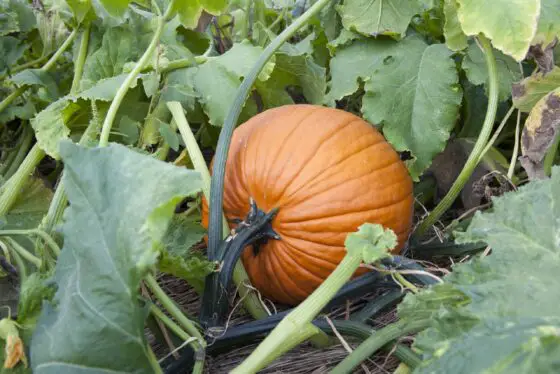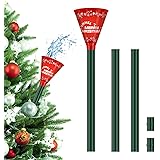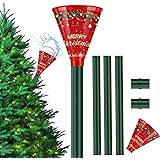Are you struggling to distinguish between pumpkin and squash plants in your garden? Don’t worry, I’ve got you covered! Knowing how to tell the difference between pumpkin and squash plants is essential for successful gardening.
In this article, I’ll guide you through the key features that set these two plants apart, helping you become a pro at plant identification. So, let’s dig in and learn how to distinguish between pumpkin and squash plants, ensuring your garden thrives with the right knowledge!
A Brief Comparison Table
Here is the table with some additional differences between pumpkin and squash plants:
| Specifications | Pumpkin Plants | Squash Plants |
|---|---|---|
| Size | Tend to be large vines, often needing a lot of space. | Smaller vines that don’t spread as much. |
| Leaves | Large, dark green leaves with 5-7 pointed lobes. | Smaller leaves that are more rounded in shape. |
| Flowers | Large yellow or orange flowers. | Smaller yellow flowers. |
| Fruit | Usually fairly large, round fruit with ribbed skin. | Vary in shape and size, smooth or ribbed skin. |
| Uses | Jack-o-lanterns, pumpkin pies. Some varieties used for cooking. | Mainly used for cooking, with different varieties used in various dishes. |
| Growing Tips | Require a lot of space, water and nutrients. Avoid planting too early. | Don’t require as much space. Still need sufficient water and nutrients. |
| Seed Saving | Seeds can be saved and replanted the next year. | Most squash seeds can be saved and replanted. |
| Pollination | Pumpkin plants have separate male and female flowers requiring pollinators. | Squash also have separate male and female flowers needing pollination. |
| Harvest Time | Pumpkins mature in late summer or autumn. | Summer squash ready in summer, winter squash in fall. |
| Storage | Store pumpkins in cool, dry place for several months. | Winter squash can store for months, summer squash just days. |
| Common Pests | Pumpkin bugs, cucumber beetles, squash vine borers. | Squash bugs, squash vine borers, beetles. |
| Varieties | Many varieties including mini, white, warty. | Acorn, butternut, zucchini, yellow crookneck, etc. |
| Seeding | Direct sow after danger of frost. | Can direct sow after frost or transplant. |
| Soil | Prefers nutrient-rich, well-draining soil. | Grows best in fertile, well-draining soil. |
How to Tell the Difference Between Pumpkin and Squash Plants
When it comes to gardening, pumpkins and squash are popular choices for many gardeners. These warm-season crops not only add beauty to our gardens but also provide us with delicious and nutritious produce.
However, for those new to gardening, it can be challenging to tell the difference between pumpkin and squash plants. In this guide, we will explore the various characteristics that can help you distinguish between these two plants.
1. Plant Structure
The first step in differentiating between pumpkin and squash plants is to understand their plant structures. While both belong to the same family, Cucurbitaceae, they have some distinct features:
- Pumpkin Plants:
- Pumpkin plants typically have long, trailing vines that can spread up to 20 feet in length.
- The leaves of pumpkin plants are large and broad, with five to seven lobes.
- Female pumpkin flowers usually develop close to the main stem, while the male flowers appear on long stalks.
- Squash Plants:
- Squash plants also have trailing vines, but they are generally more bushy and compact compared to pumpkin plants.
- The leaves of squash plants can vary in shape, but they are often broader and smaller than pumpkin leaves.
- Squash plants produce both male and female flowers on the same vine.
2. Fruit Characteristics
Another key aspect to consider when differentiating between pumpkin and squash plants is their fruit characteristics. While both produce edible fruits, there are notable differences:
- Pumpkin Fruits:
- Pumpkin fruits are typically large and round, with a hard outer shell.
- Their colors range from deep orange to pale yellow or even green, depending on the variety.
- Pumpkins are known for their sweet flavor, making them a popular choice for desserts, pies, and carving during Halloween.
- Squash Fruits:
- Squash fruits come in various shapes and sizes, including round, oblong, and even scalloped.
- Their colors can vary greatly, from yellow and green to dark green and even striped patterns.
- Squash can have a wide range of flavors, including sweet, nutty, or savory, depending on the variety.
3. Stem Characteristics
Examining the stems of pumpkin and squash plants can provide further clues to help distinguish between the two:
- Pumpkin Stems:
- Pumpkin stems are typically rough and woody, often with ridges and a slightly prickly texture.
- The stems tend to be thick and sturdy, providing support for the heavy pumpkin fruits.
- Squash Stems:
- Squash stems are generally softer and smoother in texture compared to pumpkin stems.
- Their stems are usually more slender and less robust, suitable for the smaller-sized squash fruits.
Read More: About How Often To Water Terrarium
4. Growth Habit
Understanding the growth habits of pumpkin and squash plants can also aid in identification:
- Pumpkin Growth Habit:
- Pumpkin plants tend to sprawl and take up a significant amount of space in the garden.
- They require ample room to spread their long vines and produce large fruits.
- Squash Growth Habit:
- Squash plants have a more compact growth habit, making them suitable for smaller gardens and containers.
- They can still produce a generous yield of fruits while occupying less space compared to pumpkins.
5. Pollination Methods
The pollination process of pumpkin and squash plants can reveal further insights:
- Pumpkin Pollination:
- Pumpkin plants typically require separate male and female flowers for pollination.
- Insects, such as bees, play a crucial role in transferring pollen from the male flowers to the female flowers.
- Squash Pollination:
- Squash plants, on the other hand, have both male and female flowers on the same plant.
- In some cases, they are even capable of self-pollination, meaning that pollen can transfer from the male to the female flowers within the same flower or on the same plant.
6. Varieties
Both pumpkins and squash come in various varieties, each with its own unique characteristics, flavors, and uses. Some common pumpkin varieties include:
- Jack O’Lantern
- Sugar Pie
- Cinderella
- Atlantic Giant
- Buttercup
Squash varieties are just as diverse and include:
- Zucchini
- Acorn
- Spaghetti
- Butternut
- Delicata
Each variety possesses unique characteristics that may further help differentiate between pumpkins and squash plants.
In summary, while pumpkins and squash belong to the same family, they have distinct characteristics that allow them to be distinguished from one another. By examining plant structure, fruit characteristics, stem traits, growth habits, and pollination methods, you can confidently tell the difference between these two plants.
Understanding these differences will not only help you in your gardening endeavors but also ensure that you choose the right plant for your desired culinary and decorative purposes.
Read More: About What Bugs To Put In Terrarium?
Frequently Asked Questions (FAQs)
The leaves of pumpkin plants usually have deeper lobes and more distinct ridges compared to squash plants. Squash plant leaves tend to be broader and smoother.
Yes, they do. The stems of pumpkin plants are often thick and ridged, while squash plants usually have thinner and smoother stems.
Pumpkin flowers are typically larger and more vibrant in color compared to squash flowers, which are usually smaller and less showy.
Yes, the shape of the fruit can provide clues. Pumpkins tend to have a round or oblong shape, while squash can have various shapes, including cylindrical, scalloped, or bulbous.
Pumpkins are usually orange or yellow, whereas squash can come in a wide range of colors, including green, yellow, white, and even striped.
Yes, they do. Pumpkin plants tend to have long, trailing vines that can spread across a large area, while squash plants often have shorter vines that don’t sprawl as much.
Pumpkins are known for their sweet and mild flavor, while squash can have a more varied taste, ranging from mild to nutty or even slightly savory. Texture-wise, pumpkins are usually smooth and creamy, while squash can be more fibrous.
Indeed. Some varieties, like the classic carving pumpkins, are primarily grown for decorative use during Halloween. Squash, on the other hand, includes a wider range of edible varieties, such as butternut, acorn, and spaghetti squash.
Final Thoughts
In conclusion, to distinguish between pumpkin and squash plants, there are several key factors to consider. Firstly, examine the shape and size of the fruit – pumpkins typically have a rounder shape and are larger compared to squash.
Additionally, observe the color of the fruit – pumpkins generally have a vibrant orange hue, while squash can come in various shades such as green, yellow, or even striped. Furthermore, pay attention to the texture of the skin – pumpkins often have a smoother and less bumpy surface, whereas squash can have rougher skin. By focusing on these characteristics, one can easily discern the difference between pumpkin and squash plants.
Auto Amazon Links: No products found.
Perfect Plants Christmas Tree Saver 8oz. | Easy Use Xmas Tree Preserver Food | Have Healthy Green Christmas Trees All Holiday Season
$9.97 (as of December 5, 2025 00:43 GMT +00:00 - More info- Product prices and availability are accurate as of the date/time indicated and are subject to change. Any price and availability information displayed on [relevant Amazon Site(s), as applicable] at the time of purchase will apply to the purchase of this product.
Kaiedos Christmas Tree Watering Funnel - 39 Inch Funnel, Reusable Design, Makes Watering Your Live Tree a Snap!
$14.99 (as of December 5, 2025 00:43 GMT +00:00 - More info- Product prices and availability are accurate as of the date/time indicated and are subject to change. Any price and availability information displayed on [relevant Amazon Site(s), as applicable] at the time of purchase will apply to the purchase of this product.
Wilt-Pruf® Christmas Tree/Cutting Preserver Spray |Preserves Christmas Trees, Wreaths, Garlands, Cuttings and Carved Pumpkins | Reduces Needle Drop | Keeps Cut Trees Fresh Longer | Natural (32 oz)
$21.99 (as of December 5, 2025 00:43 GMT +00:00 - More info- Product prices and availability are accurate as of the date/time indicated and are subject to change. Any price and availability information displayed on [relevant Amazon Site(s), as applicable] at the time of purchase will apply to the purchase of this product.
Forest Fresh Christmas Tree Preservative Tablets – Tree Water Additive for Live Fresh-Cut Trees – Keeps Trees Hydrated and Reduces Needle Drop – Non-Toxic, Made in USA – 1 Packet (8 Tablets)
$5.99 (as of December 5, 2025 00:43 GMT +00:00 - More info- Product prices and availability are accurate as of the date/time indicated and are subject to change. Any price and availability information displayed on [relevant Amazon Site(s), as applicable] at the time of purchase will apply to the purchase of this product.
IPOOLTENG Christmas Tree Watering Funnel 3 Tube 1 Funnels 40 Inch - 3 Section Plastic Christmas Tree Funnel Waterer, Long Funnels for Watering Trees, Best Gifts for Your Parents to Water Tree
$14.53 (as of December 5, 2025 00:43 GMT +00:00 - More info- Product prices and availability are accurate as of the date/time indicated and are subject to change. Any price and availability information displayed on [relevant Amazon Site(s), as applicable] at the time of purchase will apply to the purchase of this product.
Cuisinart 6.5" Cast Iron Smashed Burger Press, Round Flat Edge Grill Press for Crispy Smash Burgers, Burger Tool for Grill and Griddle Accessories, for BBQs and Tailgates
$24.99 (as of December 4, 2025 16:51 GMT +00:00 - More info- Product prices and availability are accurate as of the date/time indicated and are subject to change. Any price and availability information displayed on [relevant Amazon Site(s), as applicable] at the time of purchase will apply to the purchase of this product.
Snow Joe Premium Enviro Blend Ice Melt, Green-Coated Deicer Crystals, 50 lb - Safer Melter for Vegetation, Concrete & Metals w/ Anti-Corrosion Calcium Magnesium Acetate
$32.97 (as of December 4, 2025 16:51 GMT +00:00 - More info- Product prices and availability are accurate as of the date/time indicated and are subject to change. Any price and availability information displayed on [relevant Amazon Site(s), as applicable] at the time of purchase will apply to the purchase of this product.
Muddy Mat® Shown on TV Super Absorbent Microfiber Dog Door Mat for Muddy Paws, Non-Slip Washable Pet Rug, Quick Dry Chenille Entryway Carpet, Machine Washable Indoor Outdoor mat, Grey 30"x19"
$19.95 (as of December 4, 2025 16:51 GMT +00:00 - More info- Product prices and availability are accurate as of the date/time indicated and are subject to change. Any price and availability information displayed on [relevant Amazon Site(s), as applicable] at the time of purchase will apply to the purchase of this product.
OLANLY Dog Door Mat for Muddy Paws 30x20, Absorbs Moisture and Dirt, Absorbent Non-Slip Washable Doormat, Quick Dry Chenille Mud Mat for Dogs, Entry Indoor Entryway Carpet for Inside Floor, Grey
$9.99 (as of December 4, 2025 16:51 GMT +00:00 - More info- Product prices and availability are accurate as of the date/time indicated and are subject to change. Any price and availability information displayed on [relevant Amazon Site(s), as applicable] at the time of purchase will apply to the purchase of this product.
Zevo Flying Insect Trap Official Refill Cartridges - Fits Both Zevo Trap & MAX Indoor Fly Trap - Authentic Trap+Lock Technology to Catch Gnats, House & Fruit Flys (4 Official Refill Cartridges)
$14.97 (as of December 4, 2025 16:51 GMT +00:00 - More info- Product prices and availability are accurate as of the date/time indicated and are subject to change. Any price and availability information displayed on [relevant Amazon Site(s), as applicable] at the time of purchase will apply to the purchase of this product.











